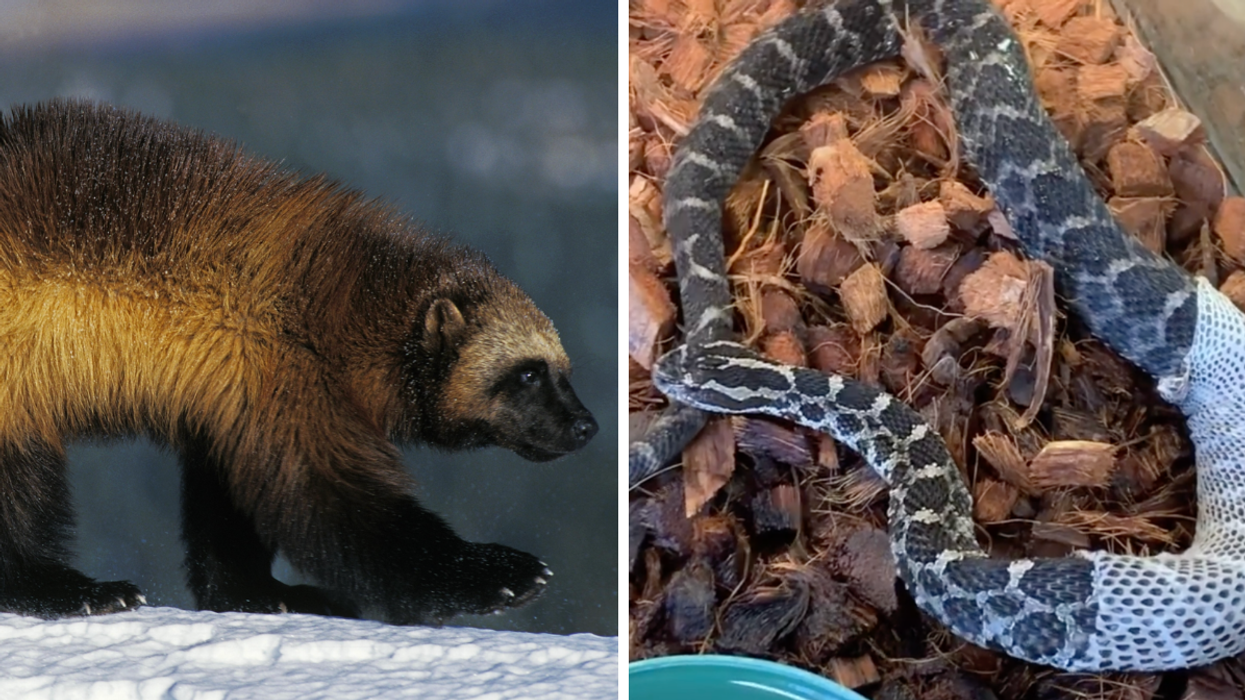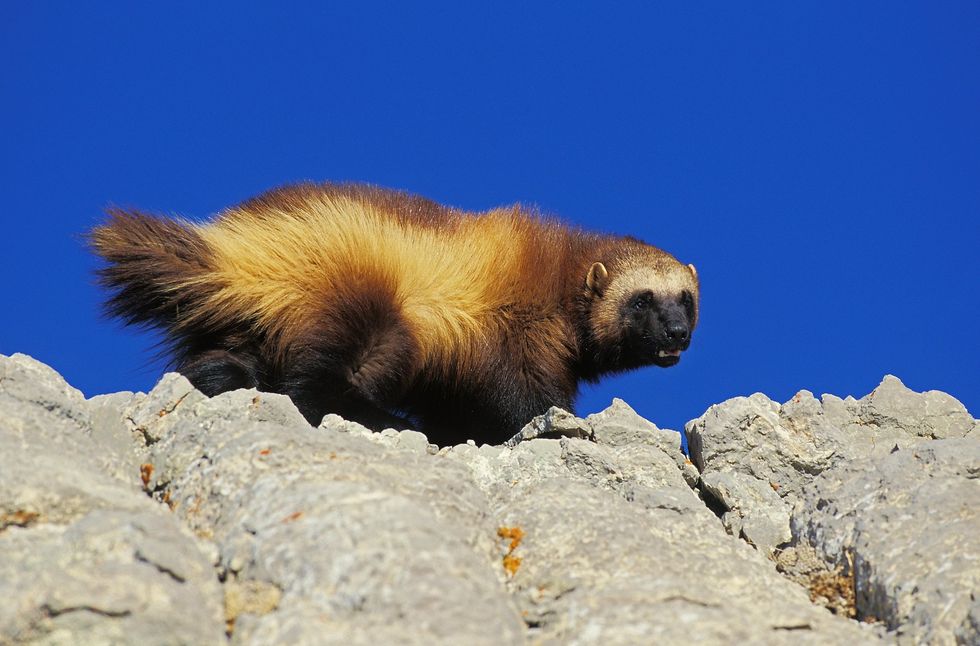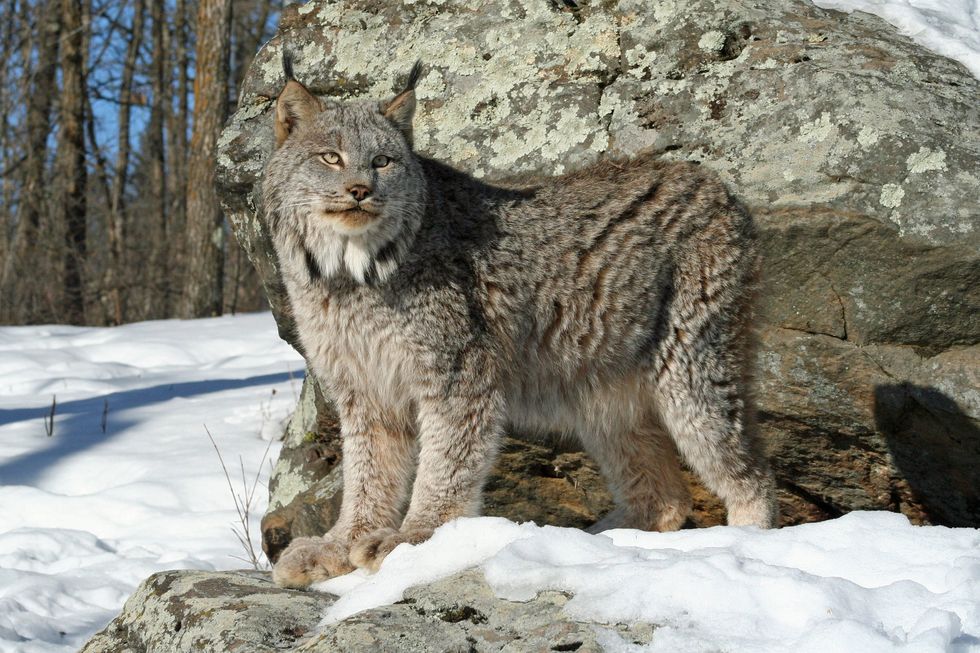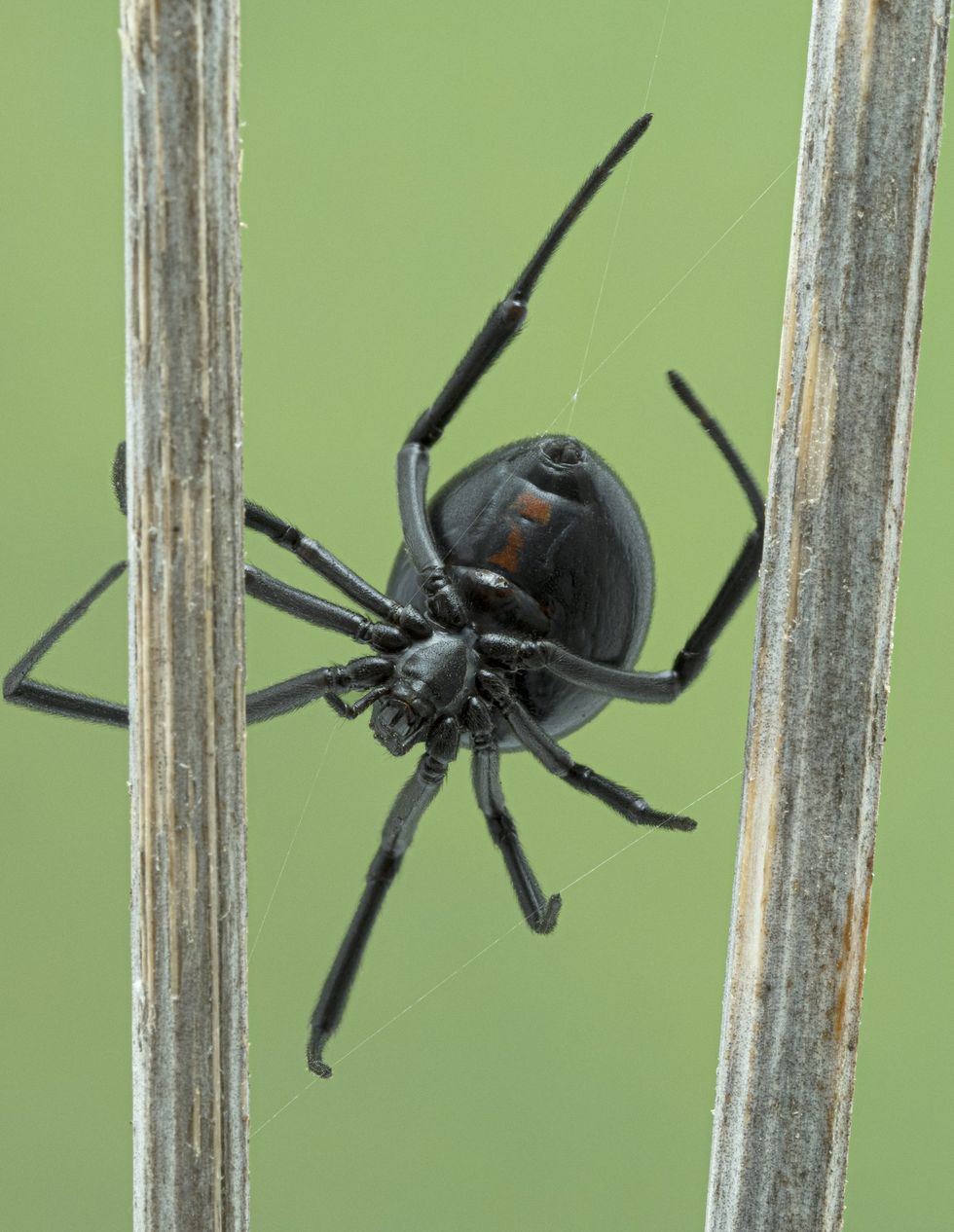7 Terrifying Creatures That Exist In Canada That You Could Actually Come Face-To-Face With
Ever heard of wolverines?

A wolverine. Right: A Massasauga rattlesnake shedding its skin.
If you’ve been living in Canada for any period of time, you're probably well aware that the country is home to some truly unique (and terrifying!) creatures.
And while we might be well aware of the average moose and beavers, they're not the only animals lurking within the depths of the Great White North.
So here are some scary-sounding animals and insects that you might come across during your time in Canada. And no, we’re not talking about Canada Geese!
Wolverines

A North American wolverine.
Yes, they exist, and no we're not talking about the famous X-Men character.
These creatures may look a bit like bears, but they’re actually the largest member of the weasel family, according to National Geographic.
In addition to their scary-looking appearance, it's worth noting that wolverines are predators and eat smaller mammals like rabbits and rodents.
In Canada, they’re mostly found in the northern and western forested areas.
Polar Bears
It’s no secret that Canada is home to polar bears, and the creatures even make an appearance on our toonies.
While this animal looks very majestic, and let’s just say it, adorable, you wouldn’t want to run into one unexpectedly.
And it's not unheard of to bump into one in Canada, especially in Churchill, Manitoba -- the so-called polar bear capital of the world!
Polar bears are actually powerful predators and attacks on humans, while rare, are still a very real and serious risk. One thing’s certain — if you do run into one, don’t play dead.
Cougars
Also known as mountain lions or pumas, cougars are also pretty prevalent in Canada.
These wildcats are actually considered among Canada’s most dangerous predators, with incredible stalking skills when it comes to their prey.
Most cougars are found in B.C., and Vancouver Island specifically is said to have the biggest population within the country.
Canada lynx

Canada lynx.
The Canada lynx is another member of the cat family, and while it looks adorable, it's still plenty more vicious than your average house cat.
The Canada lynx is a medium-sized cat, with triangular ears with a little tuft of black fur on top. It usually preys on smaller mammals, and are prevalent in Canada's forest regions, from Newfoundland to the Yukon territory.
These creatures are solitary animals and tend to give humans a wide berth. Which, all in all, is a good thing for us.
Black widow spiders

A black widow spider.
Arachnophobes, look away now.
According to Nature Conservancy Canada, there are two species of black widow spider prevalent in the country: the western black widow found in parts of B.C. through to Manitoba, and then the northern black widow located in southern and eastern Ontario.
Although, apparently sometimes they can be found outside their ranges "by hitching a ride on produce such as grapes."
However, it is worth noting that these spiders rarely bite humans and their bites aren’t usually life threatening… although they can lead to severe pain and muscle contractions even for healthy adults. Yikes.
Massasauga rattlesnake and the Prairie rattlesnake
Not all snakes in Canada are dangerous. In fact, there are plenty like the common garter snakes that are pretty harmless.
That being said, you wouldn’t want to run into or antagonize the Massasauga rattlesnake in southern Ontario or the Prairie rattlesnake in southern B.C., Alberta and Saskatchewan -- both of which are known to be venomous.
The good news is that bites from these snakes are usually rare as they usually only attack if threatened, as per CBC.
Super pigs
And last but not least, even the pigs in Canada are extra as heck.
Canadian "super pigs" came into the limelight earlier this year for apparently escaping captivity and actually invading the U.S.
According to The Guardian, these creatures are a result of cross breeding domestic pigs with wild boars in the 1980s.
These pigs are responsible for a great number of environmental damages, from eating farmers' crops to polluting water.
The animals are now spread across one million square kilometres of Canada, predominantly in Alberta, Manitoba and Saskatchewan, and they survive the colder months by tunnelling under the snow to create "snow caves."
Which is pretty genius behaviour to be fair, befitting their name!
How confident would you be running into any of these out in Canada's wilderness? Eek!
